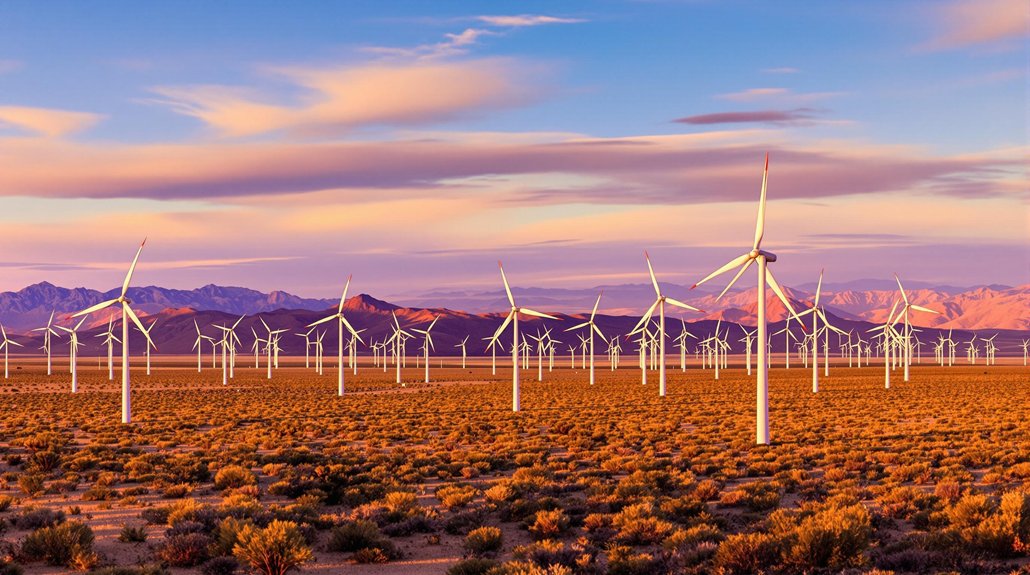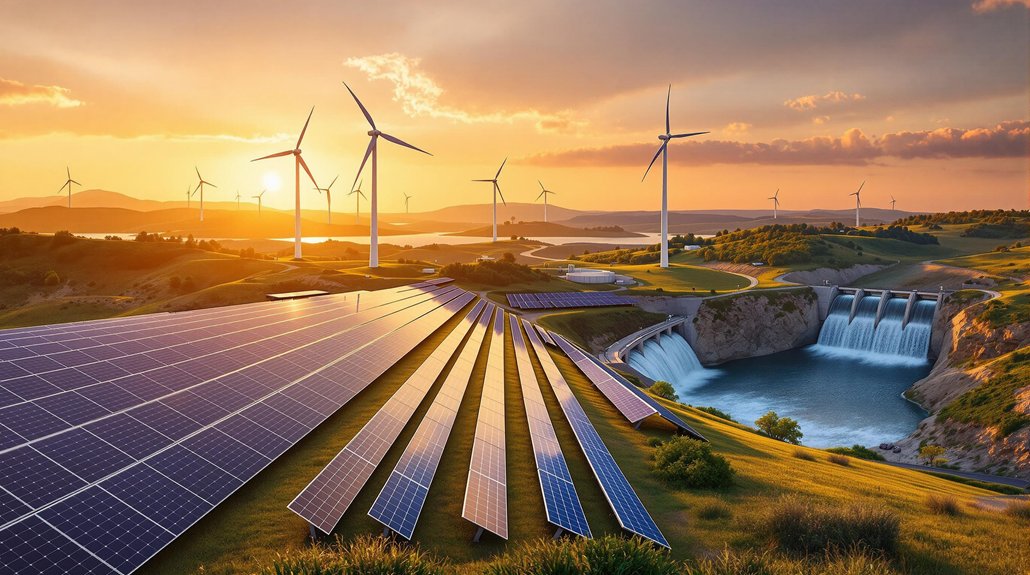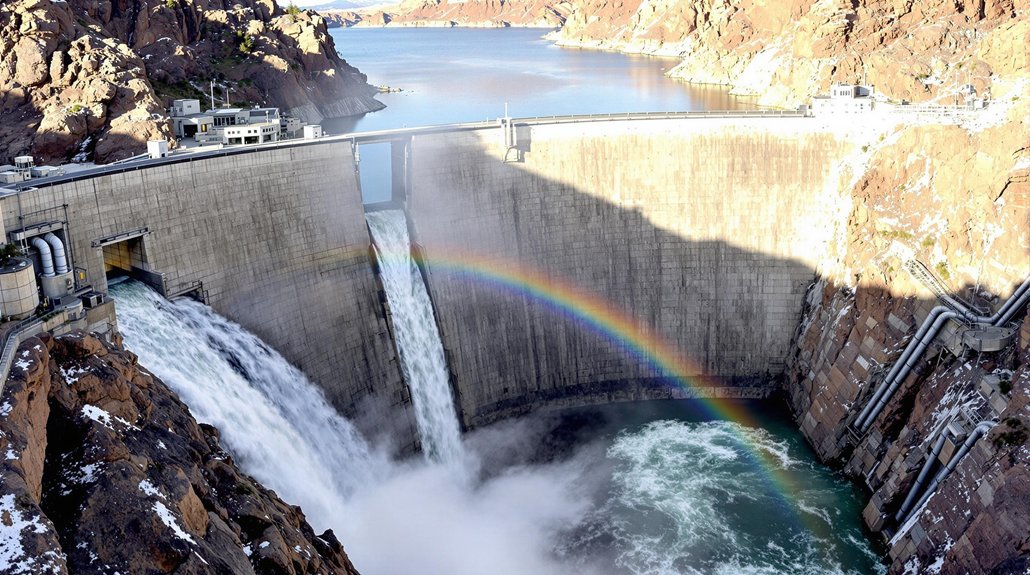The Alta Wind Energy Center dominates California’s Tehachapi Pass like a giant mechanical forest. Sprawling across 3,200 acres of Mojave Desert, this beast pumps out 1,550 megawatts of clean power – enough juice for 450,000 homes. Started by Terra-Gen in 2010, it’s now America’s largest wind farm, with over 600 turbines spinning away. Google even threw $55 million at it in 2011, proving big tech’s got a thing for big wind. There’s more to this desert giant than meets the eye.

A giant among wind farms stands tall in California’s Tehachapi Pass, and its name is Alta Wind Energy Center. Sprawling across 3,200 acres of Mojave Desert terrain, this behemoth sits 100 miles north of Los Angeles, churning out a whopping 1,550 megawatts of power. That’s enough juice to keep 450,000 homes running – not too shabby for a bunch of spinning blades in the desert. Located at 35° 0 31.2 latitude, the facility has become a landmark in renewable energy. The project exemplifies the rising renewable share in global electricity generation, which reached 30% by 2023.
Terra-Gen Power kicked off this massive undertaking in 2010, and by 2013, they’d wrapped up all eleven phases. The result? Over 600 wind turbines dotting the landscape, courtesy of GE and Vestas. Some spin out 1.5 megawatts, others push 3.0 – because why settle for just one size when you can mix and match?
Southern California Edison clearly liked what they saw, signing a 25-year deal to buy the power. Meanwhile, ownership got spread around like playing cards, with companies like NRG Energy and Brookfield Renewable getting pieces of the action. The project’s been pumping money into Kern County’s coffers through tax revenue and keeping locals employed since day one. In 2011, Google invested $55 million, marking their first direct investment in renewable energy.
But it hasn’t all been smooth sailing in the wind. Some folks weren’t exactly thrilled about their desert views getting a modern makeover. And let’s talk about those Joshua Trees that had to make way for progress – not everyone’s favorite trade-off. Birds and bats have had their share of unfortunate encounters with the turbines, too.
Still, you can’t argue with the numbers: 3.2 million metric tons of CO2 emissions avoided annually. That’s like taking a small city’s worth of cars off the road.
The wind farm’s not content to rest on its laurels, either. There’s talk of adding energy storage to smooth out those times when the wind decides to take a coffee break, and they’re looking at upgrading older turbines with newer tech.
Love it or hate it, Alta Wind Energy Center has become America’s biggest wind farm and a blueprint for future renewable energy projects. Sometimes the wind of change blows pretty hard – in this case, at utility-scale proportions.








